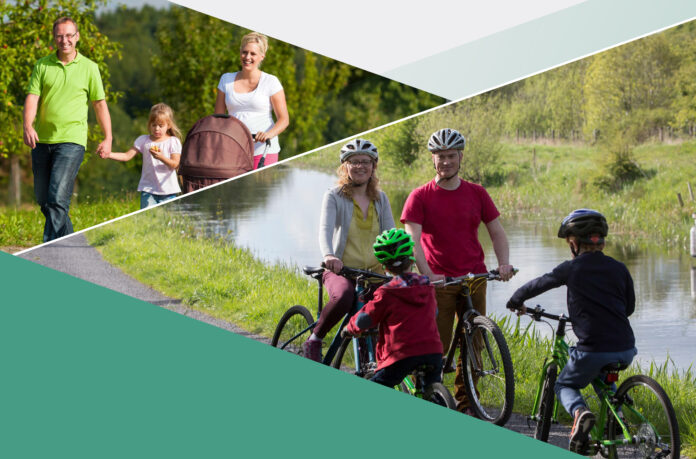The Minister for Transport Eamon Ryan T.D. has today confirmed that Transport Infrastructure Ireland (TII) has issued the Greenways and national road funding allocations totalling €676 million to local authorities for 2022.
TII is responsible for securing the provision of a safe and efficient road network and provides annual funding allocations to local authorities for this purpose. TII has also recently been assigned responsibility for Greenways.
Funding of circa €60 million has been allocated to around 40 Greenway projects across the country in 2022, in nearly every single county.
Significant Greenway investment is being directed at the border counties; Donegal is progressing a number of Greenways and Cavan, Monaghan, Leitrim and Louth are also receiving investment that will see an expansion of cross-border Greenways. Many local authorities are now working together to progress projects in their region. Cork and Waterford are developing a Mallow to Dungarvan route, and Sligo, Cavan and Leitrim are working with Fermanagh and Omagh District Council to develop the Collooney to Enniskillen route.
Minister Ryan said: “This funding will also support extensions of the Grand Canal Greenway in Offaly, Kildare and South Dublin, link the North Kerry Greenway to the Limerick Greenway, and join the Waterford to New Ross Greenway with the Waterford Greenway. We are moving into a new and exciting phase when more and more Greenways are being connected, with TII also developing a National Cycle Network.”
Minister Ryan continued: “I’m particularly happy that agreement has been reached on a Code of Best Practice for National and Regional Greenways. This Code has been agreed with the farming representative bodies and other stakeholders and provides us with an approved way to achieve voluntary land sales for Greenways where needed. Community buy-in is central to the future of our Greenways, which are one of the big success stories of rural Ireland. Greenways are a wonderful amenity for leisure and tourism, and they are also important for everyday journeys to school, work or the shops”
Minister of State Hildegarde Naughton T.D. said “The Galway to Dublin Greenway, a 330km car-free corridor between Galway and Dublin, linking the Atlantic coast to the East coast, has a particularly exciting focus in the funding being announced today. Counties including Meath, Kildare, Westmeath, Offaly will benefit from investment towards this project. Once complete, the Dublin-Galway project will provide both a local and national amenity for communities and visitors to enjoy while also supporting local business such as cafés, shops, B&Bs, camping sites and hotels.
“As a Minister based in the West of Ireland, I am also very pleased to see the Connemara Greenway receive a strong funding allocation of over €3 million in 2022. This funding includes the routes between Clifden to Recess (€1.9 million), Galway to Moycullen (€600k) and Derrygimlagh-Clifden-Kylemore Abbey (€550k). I very much look forward to cycling this route, some of which is due to be completed in the second half of next year.”
Code of Best Practice for National and Regional Greenways
The Code provides information on the planning, designing and constructing of Greenways. It includes an overview of the public consultation processes, constraints study, route selection and statutory processes. It also includes information on the use of State-owned lands and the acquisition of private lands for developing Greenways.
 The Code also outlines the relevant roles of the ‘project promoter’ which is made up of the Department of Transport, Transport Infrastructure Ireland, local authorities and other stakeholders.
The Code also outlines the relevant roles of the ‘project promoter’ which is made up of the Department of Transport, Transport Infrastructure Ireland, local authorities and other stakeholders.
The Code acknowledges the important role of farmers and landowners in the process. It outlines the procedures to ensure that they are treated fairly and equitably. The Code will be reviewed in conjunction with farming organisations and updated, where required, on a bi-annual basis initially and on an annual basis thereafter.
You can download the Code of Best Practice here.










